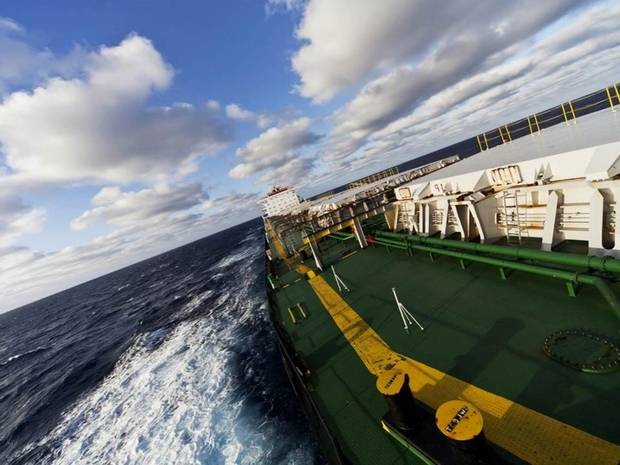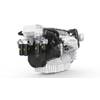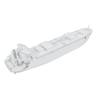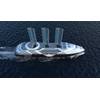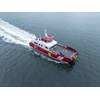From the price of oil to environmental regulation, 2015 was a year of turmoil and uncertainty for the marine sector. Despite this, there were some common global trends that will define 2016.
The Environment
In December 2015, world leaders met at the COP21 conference to discuss climate change. The event’s outcome marks a decisive move towards a low carbon future focused on achieving the agreed-upon world target of 1.5 degree climate change ceiling. Indeed, despite being the most carbon-efficient form of commercial transport[1], the scale of global shipping means it emits around 1 billion tons of CO2 annually, and is responsible for 2.2 percent of global greenhouse gas emissions. Therefore the industry has a strong role to play in meeting this target.
While no targets were specifically mentioned for the shipping industry during the COP21, the UN’s IMO[2] regulations have already established and imposed challenging regulation around emissions and fuel efficiency. Additionally, the EU introduced the MRV[3] framework in April 2015 which will require large vessels calling at EU ports to collect and publish annual data on CO2 emissions, starting from January 2018. With more scrutiny to come, the maritime industry will need to implement solutions that will help limit their emissions’ impact on the environment.
Fluctuating economic conditions
The overall decline in global shipping, timed with an increase in megaship deliveries, results in industry overcapacity. Consequently, ratings agency Fitch has revised its outlook for global shipping to negative for 2016, from stable in 2014, although long-term seaborne trade and fleet are both forecast to grow between 3 percent and 3.5 percent on average per annum to 2025[4].
The offshore industry remains particularly vulnerable. Rising costs, program delays, a large backlog ($390 billion) leading to oversupply, volatile oil prices and corruption scandals in the oil and gas industry in Brazil have created the perfect storm. Capital for building new offshore vessels is estimated to be $15 billion in 2015, down 75 percent from $68 billion in 2013[5]. We have seen exploration and extraction activities slow down and offshore owners and operators are under great pressure to meet cost challenges.
The volatile state of the industry and stricter environment regulations mean we need to change the way we operate. Companies must rely on innovation using new technologies to increase productivity and meet the new environmental regulations on existing vessels, as well as taking a fresh look at new possibilities to cost effectively produce new vessels.
Innovations driving cleaner marine environment
To meet the new demand driven by strict environmental regulations, GE Marine offers its Combined Gas turbine Electric and Steam (COGES) system for various commercial marine applications, including LNG carriers, cruise ships and container ships. The COGES system enhances conversion of energy available in the fuel to produce electricity and power for all ship needs, including propulsion. GE’s marine gas turbines can operate on various fuels including LNG boil-off gas or marine gas oil (MGO). No additional emissions reduction equipment is required to meet IMO Tier III or US EPA Tier 4 requirements.
Restrictions became even more stringent as of January 1, 2016 for diesel engines around the world. The United States Environmental Protection Agency’s (EPA) Clean Air Act began enforcing “Tier 4”, for diesel engines built after January 1. For vessels governed by IMO’s MARPOL Annex VI, more stringent nitrogen oxide (NOx) emissions requirements, known as IMO III, come into effect for vessels built after January 1, 2016 and operating in the designated environmental control areas (ECAs).
These regulations will impact both the environment as well as the engine manufacturers. Advanced engine technology is needed to make sure new ship engines meet the stricter emissions requirements, and cause as little impact to the vessel design and operations as possible.
GE Marine’s latest Tier 4 Engine meets the new EPA Tier 4 and IMO III emissions standards, reducing nitrogen oxide by more than 70 percent compared to EPA Tier 2 and IMO II emissions standards, while still maintaining world-class fuel efficiency and service intervals. Its in-engine solution is based on exhaust gas recirculation technology, reducing the formation of NOx at combustion, thus eliminating the need for a urea-based after-treatment system.
Because the engine does not need a urea-based selective Catalytic Reduction (SCR) after-treatment system, it requires only about 25 percent of the engine room space versus other market solutions, reducing the need to make significant design changes on the vessel. This technology also eliminates the incremental operating expenses for urea use, catalyst replacements and maintenance on a SCR after treatment system.
Moving to a digital marine mindset
With all eyes on operational expenditures in an uncertain market, technology will play a vital role in making marine operations as efficient and cost-effective as possible.
To meet this demand, more shipbuilders will build vessels with technology at the forefront of the design process, using advanced modeling software which analyses a vessel’s anticipated operational profile, and optimizes the design from the offset.
Using digital tools, vessels will also become greener, more efficient, and increasingly productive. GE’s SeaStream Insight, for example, provides operators with a holistic view of their ships, allowing them to spot anomalies and other data which lead to better operational decision making and therefore fuel efficiency.
With Predix at its core, SeaStream Insight allows preventative maintenance to be carried out before a failure occurs, thanks to early warning signs made visible through data-driven analytics. This level of visibility allows operators to switch from a scheduled maintenance model, to a condition-based one, reducing downtime and offering significant cost-savings.
SeaStream Insight also particularly benefits the offshore industry, where vessels are operating in remote locations, as its remote monitoring capability allows engineers to assess issues from anywhere in the world, reducing third party cost, and help solve problems faster.
With belts being tightened across the industry, the cost-savings that digital technology can deliver can’t be ignored.
2016 – a year of opportunity
The year ahead presents an opportunity –increased environmental regulation paves the way for wider use of hybrid energy solutions, which are not only cleaner, but also offer significant leaps forward in efficiency. This is good news for operators across the marine industry, who will be looking to work as cost-effectively as possible in 2016. Operating in a leaner, greener manner is the future of the marine industry, and 2016 will be a defining year.
About the Author
Tim Schweikert has been the President & CEO of GE Marine since January of 2015. First joining GE in 1984 on the Manufacturing Development Program, Tim progressed through various roles and was made General Manager, Global Locomotive Operations for GE Transportation in December 2003, overseeing the launch of the Evolution Series locomotive and the acceleration of GE’s global locomotive business.
In February of 2006, he was appointed President, GE China Transportation, leading one of GE’s fastest growing businesses in China and in November of 2007 Tim became President & CEO China Region GE Technology Infrastructure. In February 2012 Tim made the move to Johannesburg, South Africa as President & CEO GETS Sub-Sahara Africa and President and CEO of GE Southern Africa, leading GE’s efforts in contributing to the revitalization of Africa’s infrastructure.
[1] International Chamber of Shipping
[2] United Nations International Maritime Organization
[3] Monitoring, Reporting and Verification
[4] Clarkson
[5] Clarkson Apr’15 offshore seminar (multi-source consensus), GE O&G leading indicators Aug’15 (Barclays, TR consensus), Evercore ISI’s 2015 Mid-Year Global E&P Spending Outlook (20 percent), FT 18/05/15 (25 percent)) , IHS Industry Resets July ’15, top 18 exploration companies




